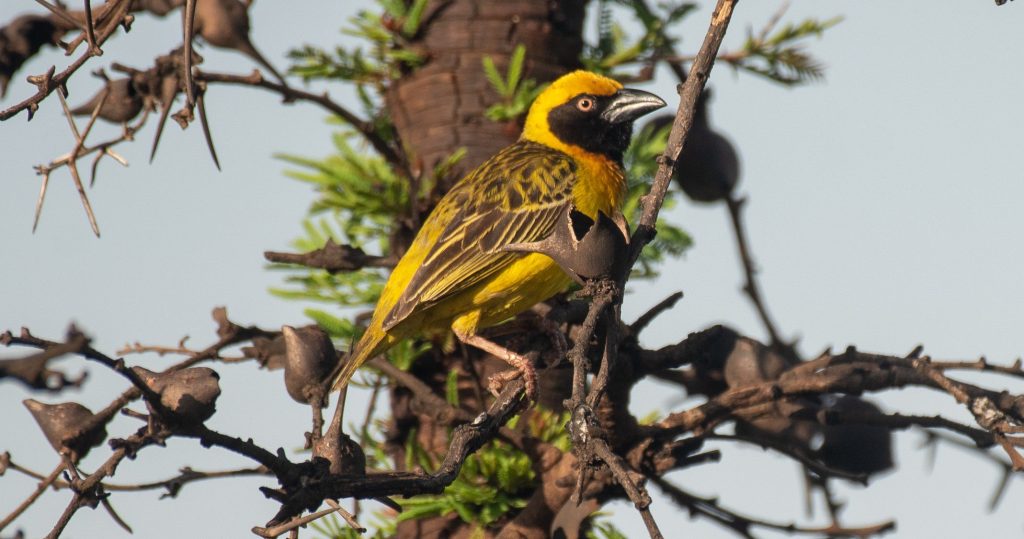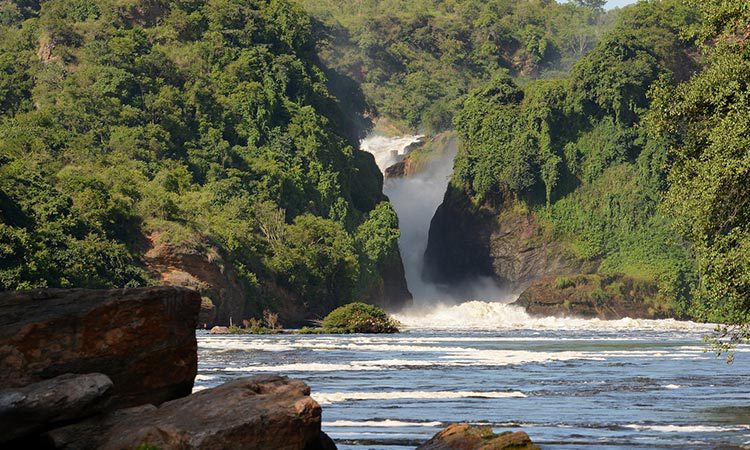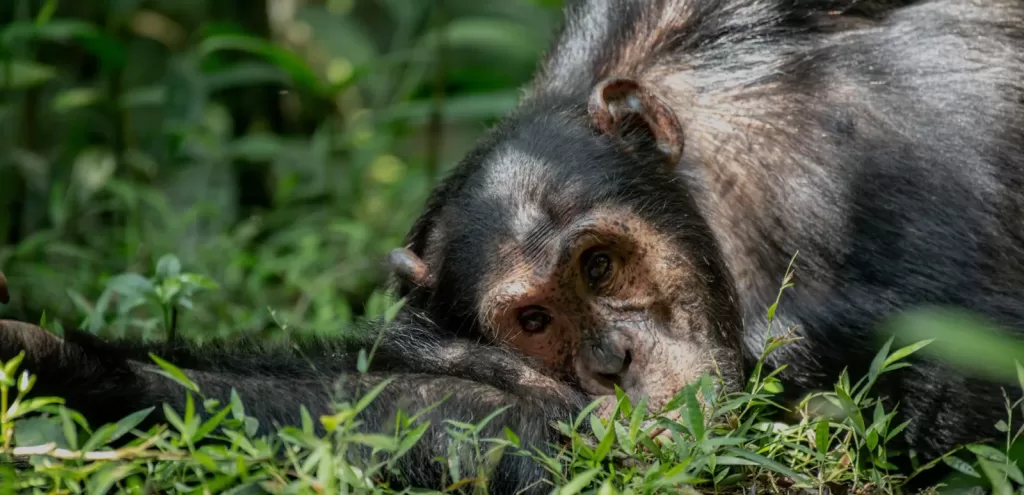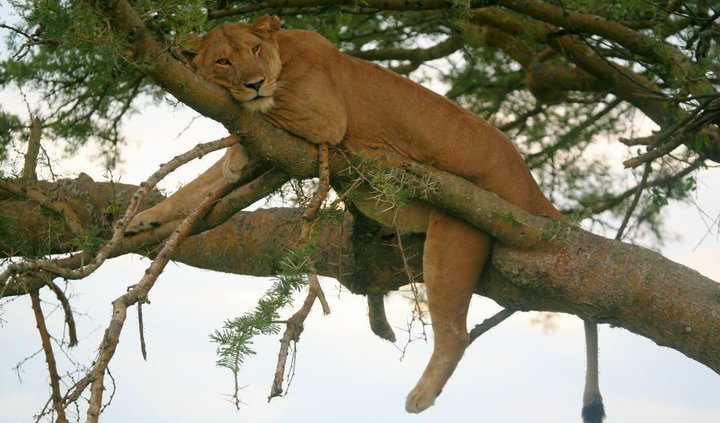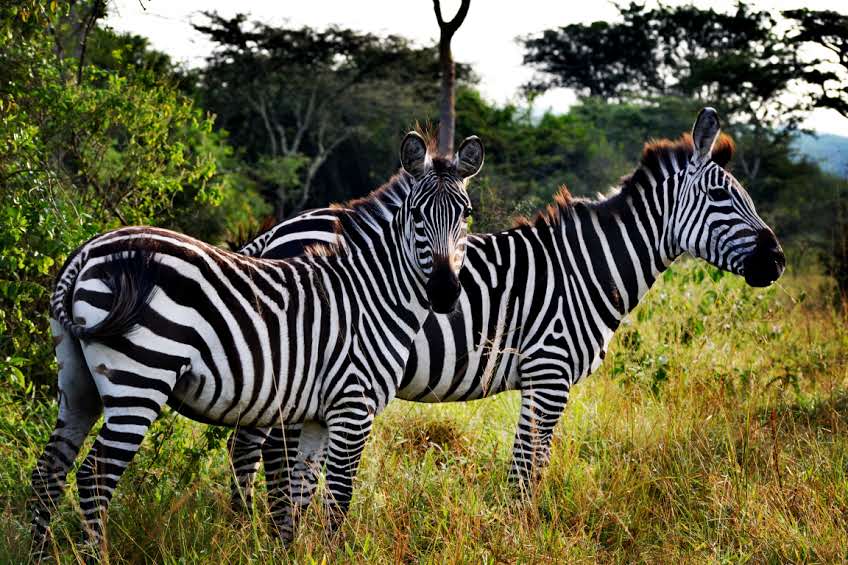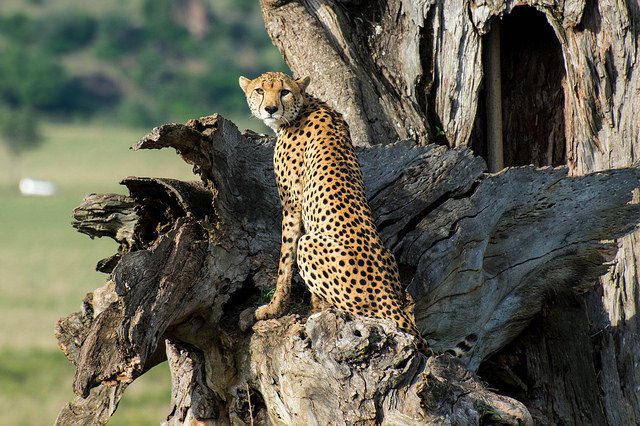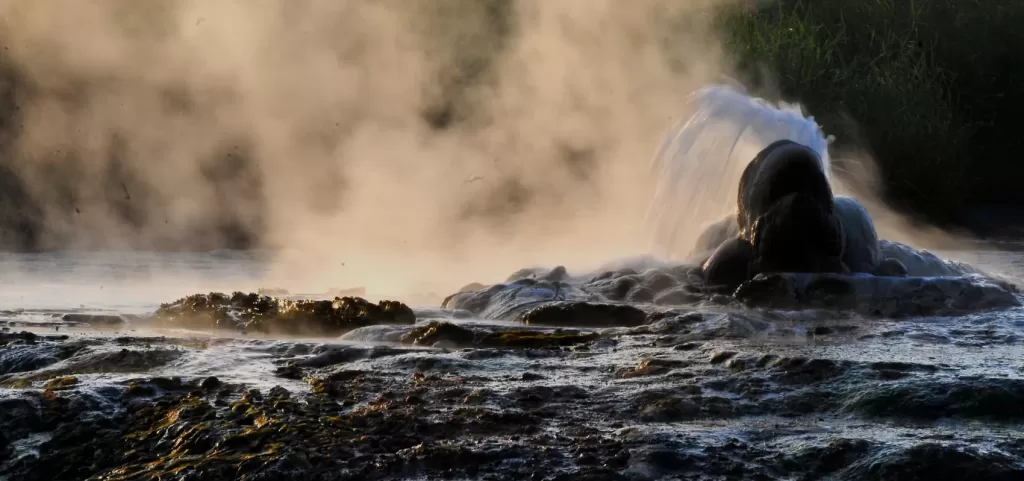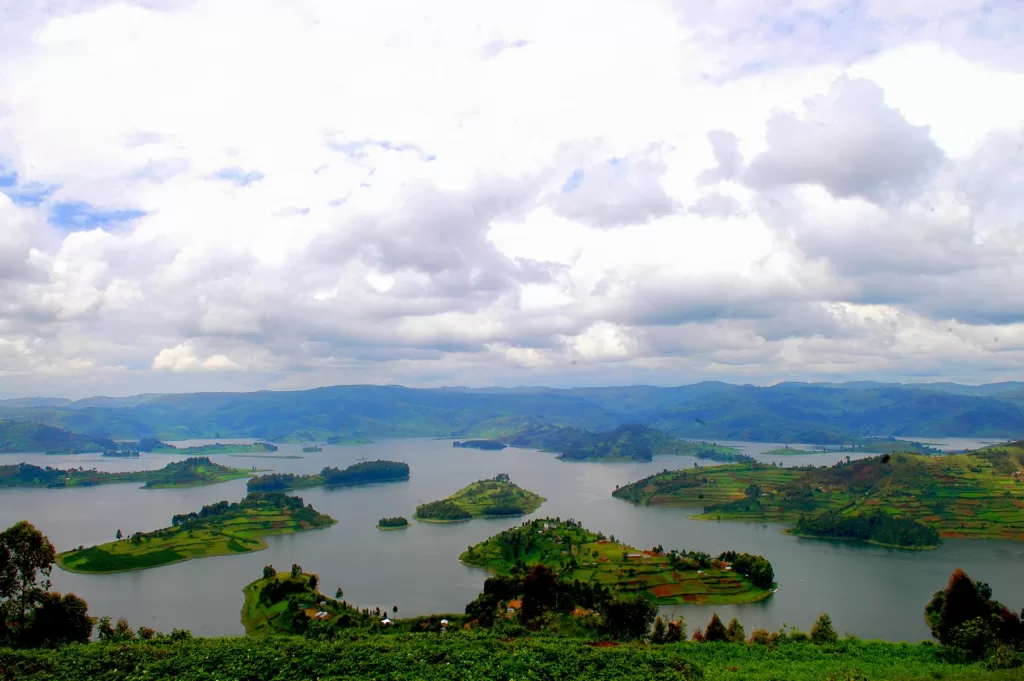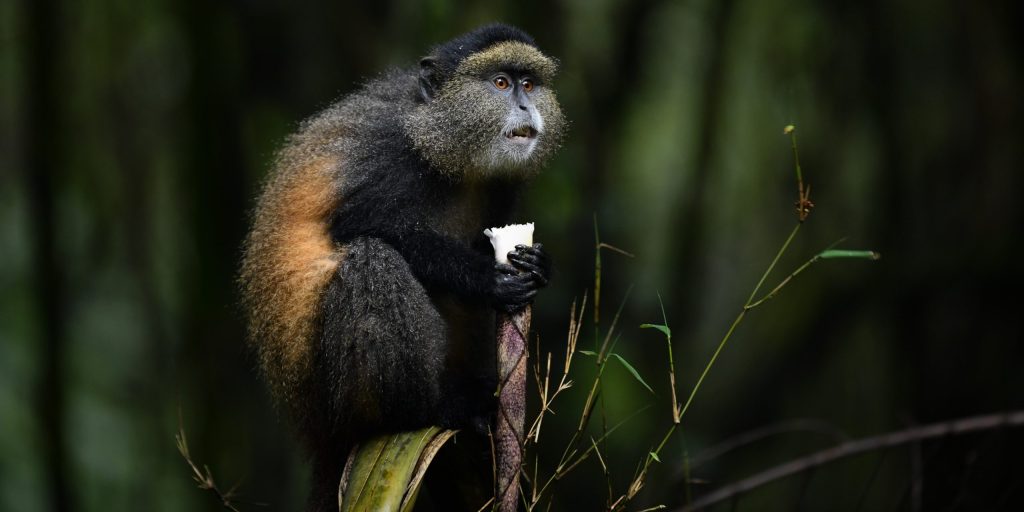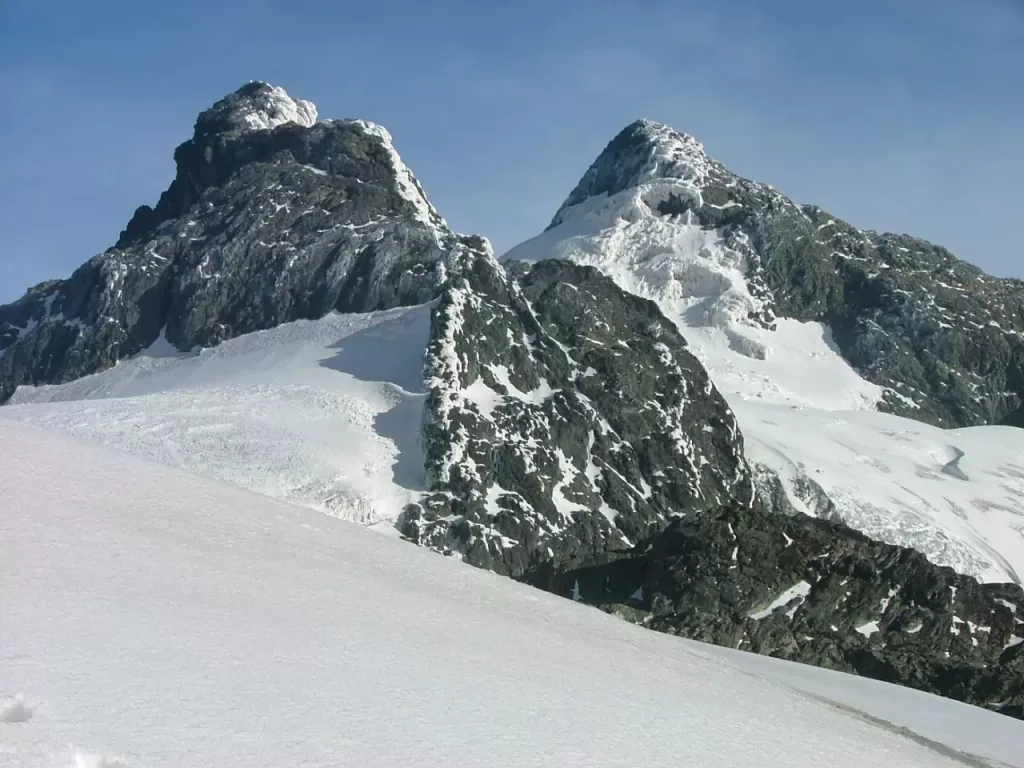Activities in and around Mount Elgon and Sipi Falls
Hiking and Mountain Climbing
The Sasa Trail is a 3-4-day round trip to the summit of 1650m from Budadiri and is considered the most easily accessible route. It gives you a chance to marvel at the vast bamboo forest, right through Jackson’s pool onto Wagagai Peak. The trail passes through the Mudangi cliffs into the bamboo forest.
The Sipi Trail begins at Forest Exploration Centre and takes 4- 7 days to descend via the Sasa Trail passing through the Tatum Cave. Expect views of the surrounding forest and the various waterfalls.
The Piswa Trail is best for wildlife viewing and takes 6-7 days to descend through Sasa Trail (6 days) or Sipi Falls (7 days). The trail passes through moorland, expect wildlife, views of Karamoja plains in Uganda and Nandi and Kapegura hills in Kenya and it also passes via the hot springs to the caldera and the peaks.
Suam Trail is a 5-day route climbing through Suam Gorge right along the Kenya Border and it starts at a higher elevation.
There are five designated campsites at Sasa River, Mude Cave, Hunters Cave, Piswa Patrol Hut, and Kapkwata with basic amenities for mountain climbers.
Nature walks at Kapkwai Mt. Elgon Forest Exploration Centre
The park also offers nature walks at Kapkwai Mt. Elgon Forest Exploration Centre. The 7km mountain bamboo trail proceeds to Kapkwai Cave passing through a montane forest to a large bamboo forest.
The 5km 3-hour Chebonet Falls Loop passes the Chebonet waterfalls and involves a climb up a rock and passing through montane and bamboo forests.
The 3 km 2-hour Ridge View Loop involves an ascent of a ridge that connects to the other trails at the main viewpoint.
Birdwatching
Mount Elgon National Park is a haven for bird enthusiasts, boasting an impressive array of over 305 avian species, including more than 50 exclusives to the Afrotropical highland biome.
Recognized as an Important Bird Area (IBA), the park offers sightings of captivating species like the cinnamon-chested bee-eater, Doherty’s bush strike, Golden-winged sunbird, and many more.
Among the notable inhabitants are the Lammergeyer, an endangered species, often spotted gliding majestically above the caldera and Suam Gorge.
Birdwatching opportunities abound at the Kapkwai Forest Exploration Centre, with highlights such as the African Blue Flycatcher, White-chinned Prinia, and African Goshawk awaiting along the trail to Cheptui Falls.
Exploring the Mount Elgon Caves
Discover some of Mount Elgon’s captivating caves with ease. Among the accessible options are Kapkwai Cave, situated near the Forest Exploration Centre, and Khaukha Cave, nestled on Wanale Ridge.
While Tutum Cave is another option, the mountain boasts several other caves, varying in size and allure.
Kapkwai Cave holds a rich history, once utilized for the traditional ceremony of Female Genital Mutilation. Legend has it that during the tumultuous 1960s and 1970s, individuals sought refuge within its natural chambers to evade tax collectors.
Embark on a picturesque 3km mountain bamboo trail, offering glimpses of diverse wildlife such as primates, birds, and rare flora like Elgon teak and Elgon olive, all achievable in less than an hour.
Venture to Khaukha Cave for a three to four-hour exploration, or opt for access via the Nabuyoga loop, where scenic vistas of Jackson’s Summit and Wagagai Peak await.
In Budadiri, indulge in short day hikes encompassing the Mudangi Cliffs, Sasa River Camp, and Drigana Lower Falls. Dive into local history as you explore caves utilized by residents in the 1940s, ideal for birdwatching and overnight camping escapades.
Abseiling – Mount Elgon and Sipi Falls
Abseiling is also offered in the park, allowing visitors to descend one of the cliffs of the Sipi Falls at a 100m drop-down overlooking the ridge.
Rock Climbing
The Sipi Falls region offers prime opportunities for rock climbing enthusiasts, with diverse challenges to suit various skill levels. At Sipi, climbers can tackle a range of routes, from a manageable 15-meter ascent to a more demanding 35-meter climb, all amidst the breathtaking scenery of Mountain Elgon National Park.
Beyond the park boundaries, climbers will discover 14 distinct routes around Sipi, each presenting its test of balance and technique.
From the exhilarating heights, adventurers can feast their eyes on stunning vistas of the majestic waterfalls and the sprawling Karamoja plains, stretching out into the distance.
For those who prefer a different kind of adventure, a short drive to Tororo reveals another thrilling opportunity. Towering over the town at 1,483 meters, Tororo Rock beckons with its imposing presence.
Ascending this natural landmark promises a three-hour journey of exploration and achievement, culminating in panoramic views of the town, surrounding villages, and the majestic Mount Elgon.
Mountain Biking
Trails along Sipi Trading Centre to Chema Hill for 1.5 hours and provides views of the waterfalls. We recommend the 1 ½ hour trail that runs from Sipi Trading Centre at an altitude of 1,775m to Chema Hill in Kapchorwa. You have beautiful views of the Karamoja plains and several waterfalls en route.
Sport Fishing – Mountain Trout Fish
The fishing is done on the highest of the 3 waterfalls past Sipi Falls on Sipi River Lodge with a catch-and-release method. This is the only place where you can fish a Mountain Trout.
Community-based tourism in and around Mt. Elgon
Mount Elgon is home to two tribes, the Bagisu, and the Sabiny, with the marginalized Ndorobos forced to dwell deep within the forest of Benet. The Bagisu, also known as the BaMasaba, consider Mount Elgon to be the embodiment of their founding father Masaba, and refer to the mountain by this name.
Sipi Widows’ Group – Coffee Plantation Tours
Discover the captivating experience offered by The Sipi Widow’s Group, a community-based initiative focused on Arabica Coffee Plantation.
Learn about the intricate process of coffee cultivation and production, from planting to grinding, storing, and washing.
Engage with the local Sabiny community as you delve into their way of life. Participate in traditional activities such as weaving, cooking local African cuisines, and sampling authentic dishes.
Gain firsthand insight into Sabiny culture and traditions through interactions with residents.
Take a stroll through the craft shop, where visitors can find unique souvenirs to remember their visit. The proceeds from the shop contribute to vital community initiatives.
These include education on the dangers of female circumcision, sponsoring orphaned children’s school fees, and sustaining the coffee plantation.
The Budadiri Community Tour and Eco-Tourism Experience
This is an immersive community tourism adventure that allows visitors to explore the lush Arabica coffee plantations while also engaging with various aspects of regional culture.
You can witness traditional dance performances, learn about local cuisine preparation, delve into folklore, and savor the renowned Malewa dish crafted from bamboo shoots.
For those seeking adventure, three captivating hiking routes are available. The Namugabwe Cave Trail, spanning a full day, winds through Bamasaba community lands and expansive banana plantations, culminating at the historic Namugabwe Cave.
The three-day journey to Sipi Falls offers an enriching cultural encounter with the neighboring Bagishu and Sabiny tribes. Lastly, the Dirigana Loop Trail leads adventurers to the breathtaking Dirigana Falls and Gabushana Cave while passing through bustling local markets and the iconic “Walls of Death” along the way.
The Imbalu Bagisu Circumcision
This is a cultural heritage of the two local tribes living in the Sipi area- the Bagisu and Sabiny. It is a rite of passage for Bagisu men to adulthood through cultural initiation processes that conclude with circumcision. The event takes place publicly in August and December.
Nyero Rock Painting
For an intriguing journey into our ancestral past, visit the Nyero Rock Painting caves located in Kumi District, just a two-hour drive from the Sipi area.
These caves offer a window into the lives of our ancestors from millennia past. Revered by the local community as sacred grounds where the spirits of their forebears still reside, each cave holds its unique treasures.
Firstly, Nyero 1 presents an array of geometric and abstract paintings, likely utilized in sacred rituals such as rain-making and fertility ceremonies.
Moving on to Nyero 2, prepare to be awestruck by the grandeur of the largest and highest painting within the caves. Crafted with skill and ingenuity, this masterpiece is believed to have been created by Pygmies, adding a layer of mystique to its allure.
Lastly, Nyero 3 unveils a hidden gem—a small shelter adorned with intricate ceiling paintings. Among them, sets of concentric circles painted in pristine white beckon observers to ponder their significance and meaning.
Embark on a journey of discovery and unearth the secrets of our ancestral past.
Hiking at Sipi Falls
When hiking at Sipi Falls, exploring all three waterfalls typically takes 3 to 4 hours, depending on your fitness level. The trek spans about 7 kilometers and involves steep inclines, ladder climbs, and passages through local farms.
You can start your journey at various points, depending on which waterfall you want to see first.
For those aiming to see all three waterfalls, beginning with the uppermost one is advisable, proceeding downstream towards the primary waterfall.
Starting from the highest waterfall requires following the Budadiri route, then connecting to the Sasa trail to ascend to the summit before descending along the Sipi trail to the waterfalls.
The main Sipi Falls descends approximately 95 meters and is the culmination point for many hikers, while the second, Simba Falls, stands at about 74 meters tall.
Beyond the first waterfall lies a steep trail leading to an ancient cave inhabited by bats. Hikers can safely stand near the cave entrance, enjoying the refreshing breeze while admiring the waterfall.
Where to stay in Mount Elgon National Park
Sipi Heritage Lodge
Sipi Heritage Lodge offers a main house and five detached cottages situated on the foothills of Mount Elgon. The cottages are individually designed and have en-suite bathrooms.
The lodge also has a lounge and bar area, a fireside dining area, and a veranda with a beautiful view of the Falls of Kapsurur.
Rafiki Lodge Sipi
Rafiki Lodge Sipi is located on a cliff 1785 meters above sea level and has a stunning view of Sipi Falls and the Valley. It features 12 individually furnished rooms, including two family cottages with two bedrooms and one bathroom.
Other amenities include a bar and lounge area, an outdoor fireplace, a garden and terrace, and a dining area.
Sipi Falls Resort
Sipi Falls Resort is a moderate/midrange resort located in the Sipi region. It has five comfortable thatched cottages with private facilities.
The resort also has a good restaurant that serves local and international cuisine, as well as a nice bar area where you can enjoy your drink.
The room categories available include double, single, twin, triple, and family occupancy and all offer stunning views of the green vegetation and beautiful waterfalls.
The best time to visit Mount Elgon National Park
The best time to explore Mountain Elgon is undoubtedly during the dry months of December to February and June to October. During these periods, accessing the park is hassle-free, with dry roads facilitating easy driving.
On the other hand, the wet season from March to May and later October to November presents less favorable conditions for visitors. During this time, trails become inundated with mud, making them slippery and challenging to navigate.
How to get to Mountain Elgon National Park
Mt. Elgon National Park lies above Mbale town, 235 km east of Kampala. Accessible via Jinja-Mbale highway, the journey from Kampala, through Jinja, takes about 3-4 hours.
